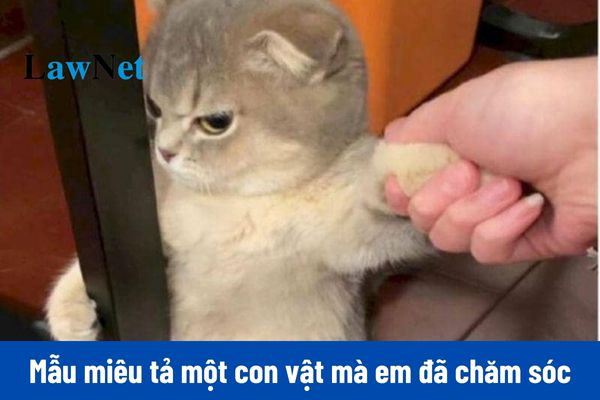Vietnam: What are the sample descriptive essays on an animal you have cared for and bonded with? What learning outcomes are required for writing practice for 4th-grade students?
What are the sample descriptive essays on an animal you have cared for and bonded with under the 4th-grade Vietnamese language curriculum?
Students can refer to the following sample descriptive essays on an animal you have cared for and bonded with under the 4th-grade Vietnamese language curriculum:
|
The Rooster My mother raises a flock of chickens, and the most majestic of them all is a rooster. |
| Description of an Animal You Have Cared for and Bonded with - The Dog Knowing how much I love dogs, during my last summer holiday at my grandmother's, she gave me a very cute puppy; at that time, it was only 3 months old. I immediately liked it and asked my grandmother if I could take it home, naming it Misa. Misa has grown very quickly. When my grandmother gave it to me, it was just as big as my calf. Now, not only has it grown fast, but it also become very strong, with a beautifully balanced physique, and its fur is silky and soft as velvet. Misa's ears are sharp and always perked up, looking very adorable as if to listen to any surrounding movements. Misa is very intelligent and obedient. Its nose is wet and always sniffs around for unusual scents. It has a set of sharp teeth that deter any thieves from approaching. It moves very gently and runs very fast. Every morning, Misa plays with a black cat in the yard. When tired of playing, it finds a cool spot to lay down. Misa lies down resting its head on its forelegs and dozes off, seemingly sleeping well, but no! It immediately gets up when it hears noise or catches an unfamiliar scent. If it is a stranger, Misa shows aggression by showing its teeth, growling as if to say, “Get out of here quickly!” But on the contrary, when a family member comes home, even from the alley, Misa knows and always runs out to the gate to welcome them, circling around happily wagging its tail. It is very joyful at such times, the essay describes the dog that I love the most. All the family members like Misa; it's like an important member of our family. Before going to sleep, it always checks around the house for any abnormalities, allowing us to sleep peacefully after a tiring, stressful day of work and study. |
|
The Cat My family has been raising a cat for quite a while now. To me, it feels like a family member. |
Note: Information is for reference only!

What are the sample descriptive essays on an animal you have cared for and bonded with under the 4th-grade Vietnamese language curriculum? (Image from the Internet)
What learning outcomes are required for writing practice for 4th-grade students in Vietnam?
According to the General education program in Literature issued with Circular 32/2018/TT-BGDDT, the learning outcomes required for writing practice for 4th-grade students in Vietnam are as follows:
- Be able to write a narrative essay recounting a story read or heard, with creative details.
- Be able to write a descriptive essay about a person or landscape using similes, personification, and descriptive language to highlight the features of the subject described.
- Be able to write a paragraph expressing personal feelings or emotions about an event, poem, or story.
- Be able to write a paragraph explaining why you agree or disagree with a meaningful phenomenon or event in life.
- Be able to write a paragraph introducing a character from a book or an animated movie watched, describing appearance, gestures, actions, and language.
- Be able to write a work report or activity program using tables or charts.
What is the age of students entering 4th grade in Vietnam?
According to Article 33 of the Primary School Charter issued with Circular 28/2020/TT-BGDDT, the regulation on the age of primary school students is as follows:
Age of Primary School Students
1. The age for students entering first grade is 6 years old and calculated by year. Disabled children, children with physical or intellectual developmental delays, children in particularly disadvantaged areas, ethnic minority children, orphans, children returning from abroad, children of foreigners studying and working in Vietnam may enter first grade at an older age but not more than 3 years. Cases of children entering first grade older than 3 years shall be decided by the Head of the Division of Education and Training.
2. Primary school students may enter grades at the age older than the prescribed age include students who retain a grade, students in particularly disadvantaged areas, ethnic minority students, disabled students, students with physical or intellectual developmental delays, orphans, children returning from abroad, and other cases as prescribed by law.
Thus, typically, students entering first grade are 6 years old. The age of a 4th-grade student is 9, except for students who retain a grade, students in particularly disadvantaged areas, ethnic minority students, disabled students, students with physical or intellectual developmental delays, orphans, children returning from abroad, and other cases as prescribed by law.

